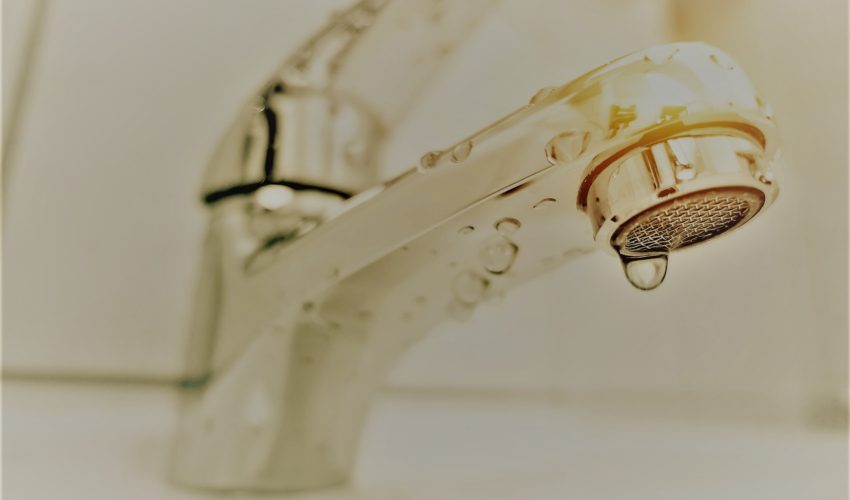My Comprehensive Handbook to Resolving Low Water Pressure in Your Home
My Comprehensive Handbook to Resolving Low Water Pressure in Your Home
Blog Article
What're your thoughts on 4 Ways to Troubleshoot Low Water Pressure?

Low tide pressure in your home can be a frustrating problem, impacting everything from showering to washing meals. If you're experiencing weak water circulation, there are a number of possible causes and services to check out. In this overview, we'll go over common reasons for low water stress and sensible steps to resolve the issue effectively.
Intro to Low Water Stress
Low tide stress takes place when the flow of water from your taps, showers, and various other fixtures is weaker than usual. This can make daily jobs a lot more challenging and less effective. Understanding the causes of low water pressure is essential to discovering the appropriate solution.
Common Reasons For Low Water Stress
Pipeline Obstructions
With time, pipelines can end up being clogged with mineral deposits, sediment, or particles, restricting the circulation of water. This is a typical issue in older homes with galvanized steel pipes.
Corrosion
Deterioration within pipes can bring about leakages and decreased water stress. Corrosion buildup can tighten water circulation, especially in aging plumbing systems.
Faulty Pressure Regulatory Authorities
Stress regulatory authorities are in charge of maintaining consistent water stress in your home. If they malfunction, it can lead to low water pressure or uneven circulation throughout your home.
Municipal Water System Issues
Occasionally, the trouble lies outside your home. Municipal water supply issues, such as main line leaks or upkeep work, can briefly minimize water pressure in your area.
How to Diagnose Low Tide Stress
Checking Faucets and Fixtures
Beginning by checking the water pressure at different faucets and fixtures throughout your home. If the problem is separated to specific areas, it might indicate localized problems.
Evaluating Pipes
Evaluate noticeable pipelines for signs of leaks, rust, or blockages. Take notice of any type of uncommon noises, such as knocking or rattling pipes, which might suggest concerns within the plumbing system.
Consulting with a Plumber
If you're incapable to pinpoint the root cause of low water pressure, consider hiring a professional plumber to perform a thorough inspection. They can recognize underlying concerns and advise ideal services.
DIY Solutions to Repair Low Water Pressure
Cleaning Aerators and Showerheads
Natural resources can accumulate in aerators and showerheads, minimizing water flow. Get rid of and clean up these components on a regular basis to improve water stress.
Flushing Hot Water Heater
Debris accumulation in the hot water heater can restrict flow and reduce performance. Purging the tank regularly aids get rid of debris and preserve ideal efficiency.
Inspecting Pressure Regulator
Guarantee that the pressure regulator is working properly. Changing or changing the regulator can help recover appropriate water stress throughout your home.
Clearing Clogs in Pipes
For minor blockages, attempt utilizing a plumbing snake or chemical drainpipe cleaner to clear obstructions in pipelines. Be cautious when using chemicals and adhere to security guidelines.
When to Call a Specialist Plumber
If DIY efforts fall short to solve the issue or if you presume substantial plumbing problems, it's ideal to look for assistance from a qualified plumber. They have the competence and tools to attend to complicated problems safely and successfully.
Preventive Measures to Maintain Water Stress
Routine Upkeep
Schedule regular upkeep for your plumbing system to prevent problems such as rust, leaks, and clogs. Addressing minor issues early can help prevent more substantial repair work later on.
Mounting a Pressure Booster
Take into consideration mounting a stress booster pump to improve water stress in locations with regularly reduced flow. This can be specifically advantageous for multi-story homes or homes with high-demand fixtures.
Tracking Water Usage
Be mindful of water usage behaviors and stay clear of ill-using the plumbing system. Straightforward changes, such as shocking showers and laundry loads, can aid preserve ample water pressure.
Verdict
Taking care of low tide stress can be frustrating, yet recognizing the underlying causes and executing appropriate solutions can restore optimum flow throughout your home. Whether it's cleaning up aerators, examining pipes, or speaking with a plumber, taking positive actions can make sure a steady supply of water for your daily needs.
FOUR WAYS TO FIX LOW WATER PRESSURE NOW
Turning on a shower or faucet only to find the water comes out in a sad, slow drizzle is never a good feeling. How exactly are you supposed to wash a pan or take a quick shower when it takes 10 minutes just to rinse off a little soap? The good news is that when your water pressure is bad, there's always a cause: typically one that can be easily fixed. Here are some of the most common causes of low pressure and what you can do to fix the issue:
DEBRIS AND MINERAL DEPOSIT BUILDUPS
If you notice low water pressure from just one or two of the fixtures in your house, the problem likely has to do with debris buildup. Water is full of minerals and other debris, all of which can accumulate in your pipes and on your fixtures. This can cause a blockage that affects how much water flows through. To fix this, try filling a small plastic bag with white vinegar, and use a rubber band to hang it around your showerhead or faucet. Let the head of the fixture soak for a few hours, and the vinegar should loosen the deposits.
WATER LEAKS
Leaks are another common cause of low water pressure. If water is flowing out of your plumbing through a hole or crack before it can reach your fixture, the pressure coming out of the faucet or showerhead will be lower. A plumbing professional is your best bet for finding and repairing a leak in your water supply pipes.
Leaks are another common cause of low water pressure. If water is flowing out of your plumbing through a hole or crack before it can reach your fixture, the pressure coming out of the faucet or showerhead will be lower. A plumbing professional is your best bet for finding and repairing a leak in your water supply pipes.
FOUR WAYS TO FIX LOW WATER PRESSURE NOW
Turning on a shower or faucet only to find the water comes out in a sad, slow drizzle is never a good feeling. How exactly are you supposed to wash a pan or take a quick shower when it takes 10 minutes just to rinse off a little soap? The good news is that when your water pressure is bad, there's always a cause: typically one that can be easily fixed. Here are some of the most common causes of low pressure and what you can do to fix the issue:
DEBRIS AND MINERAL DEPOSIT BUILDUPS
If you notice low water pressure from just one or two of the fixtures in your house, the problem likely has to do with debris buildup. Water is full of minerals and other debris, all of which can accumulate in your pipes and on your fixtures. This can cause a blockage that affects how much water flows through. To fix this, try filling a small plastic bag with white vinegar, and use a rubber band to hang it around your showerhead or faucet. Let the head of the fixture soak for a few hours, and the vinegar should loosen the deposits.
WATER LEAKS
Leaks are another common cause of low water pressure. If water is flowing out of your plumbing through a hole or crack before it can reach your fixture, the pressure coming out of the faucet or showerhead will be lower. A plumbing professional is your best bet for finding and repairing a leak in your water supply pipes.
Leaks are another common cause of low water pressure. If water is flowing out of your plumbing through a hole or crack before it can reach your fixture, the pressure coming out of the faucet or showerhead will be lower. A plumbing professional is your best bet for finding and repairing a leak in your water supply pipes.
A VALVE ISSUE
If you have low water pressure throughout your home, check your main shut-off valve to make sure it's completely open. You may also want to see if there's a pressure-reducing valve installed. If there is, have a plumber help you adjust the settings to get the pressure you're looking for.
OTHERS USING WATER
Believe it or not, your low water pressure could be caused by your neighbors. If you notice low pressure at certain times of day, it may be because you and the people living next to you have similar schedules - when everyone is showering at the same time, the pressure will be lower in every home. Low pressure throughout the neighborhood may also be caused by an issue with your municipal water supply. If that's the case, call the supplier to see if they're working on the issue.
https://www.rotorooter.com/blog/water-leaking/low-water-pressure-fixes/

We had been made aware of that editorial about 10 Reasons for Low Water Pressure in Your House from a friend on another web property. Kindly take the opportunity to distribute this entry if you enjoyed it. Thanks a lot for taking the time to read it.
Book An Appointment Report this page